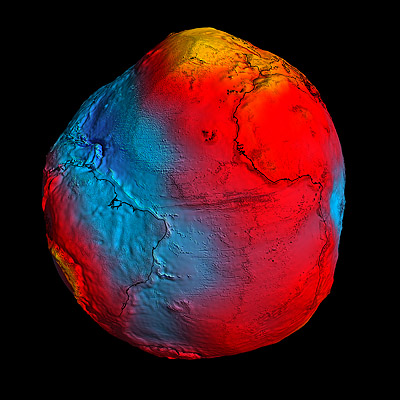ESA's GOCE satellite has gathered enough data to map Earth's gravity with unrivaled precision, and so we get the most accurate model of the 'geoid' ever produced. The geoid is the surface of an ideal global ocean in the absence of tides and currents, shaped only by gravity. It is a crucial reference for measuring ocean circulation, sea-level change and ice dynamics.
The new geoid was unveiled today at the Fourth International GOCE User Workshop hosted at the Technische Universität München in Munich, Germany and provide the best view yet of global gravity. The gravity data from GOCE are helping to develop a deeper knowledge of the processes that cause earthquakes, such as the event that recently devastated Japan.

Since this earthquake was caused by tectonic plate movement under the ocean, the motion cannot be observed directly from space. However, earthquakes create signatures in gravity data, which could be used to understand the processes leading to these natural disasters and ultimately help to predict them.
GOCE has achieved many firsts in Earth observation. Its gradiometer – six highly sensitive accelerometers measuring gravity in 3D – is the first in space. It orbits at the lowest altitude of any observation satellite to gather the best data on Earth's gravity. The design of this sleek one-tonne satellite is unique.
ESA's GOCE mission has delivered the most accurate model of the 'geoid' ever produced, which will be used to further our understanding of how Earth works. The geoid is the surface of an ideal global ocean in the absence of tides and currents, shaped only by gravity. It is a crucial reference for measuring ocean circulation, sea-level change and ice dynamics – all affected by climate change. Credits: ESA/HPF/DLR
In addition, GOCE uses an innovative ion engine that generates tiny forces to compensate for any drag the satellite experiences as it orbits through the remnants of Earth's atmosphere.






Comments